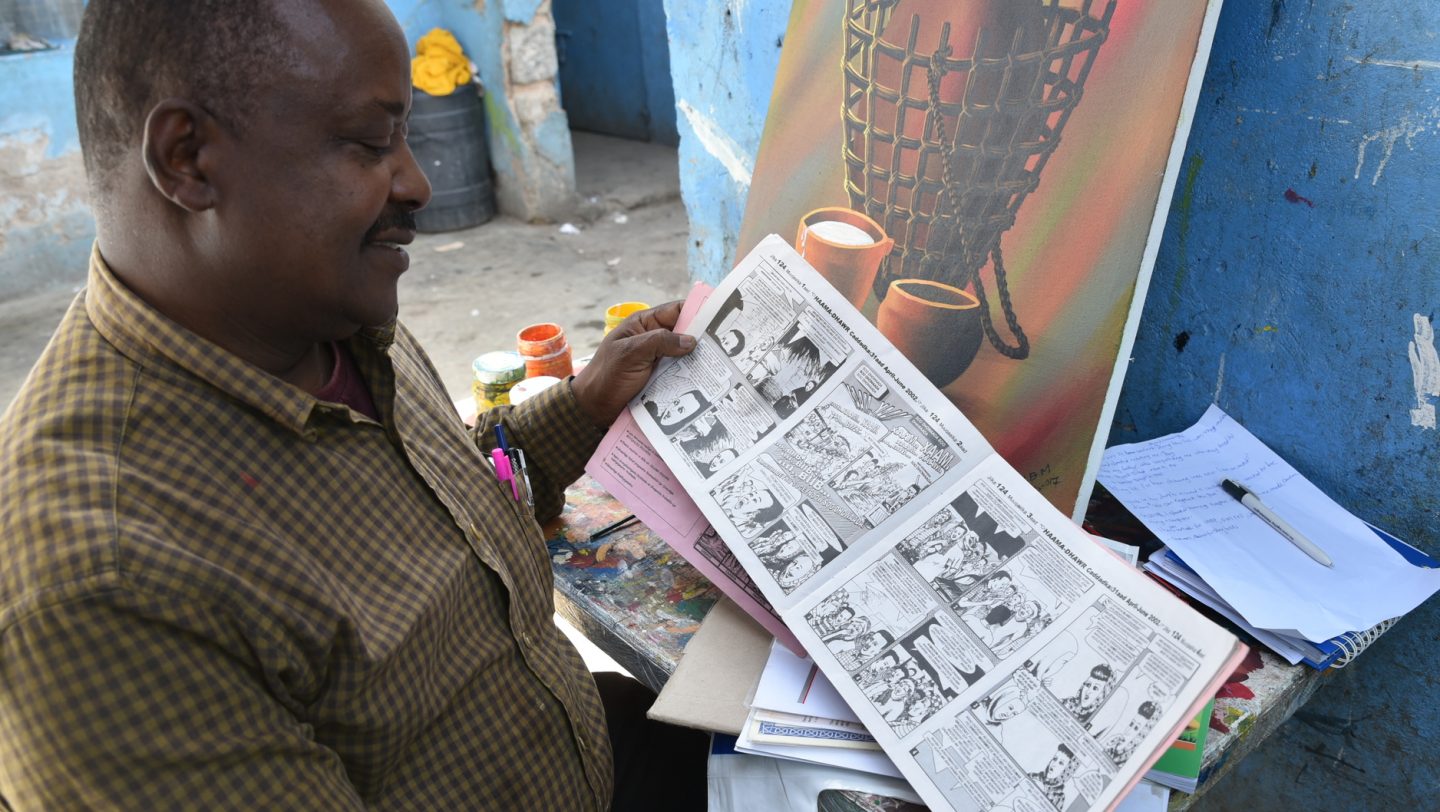Somali refugee uses his artistic skills to earn a living
“Art feeds me. This is my hobby, it is my life. I have nothing else.”
Mudey Muktar works on his painting outside his house in Nairobi. He is one of the artists who are part of the Artists for Refugees Livelihood project. UNHCR/M.Ndubi
“I wish you came here yesterday. I had a customer was collecting his painting.” Said a charming Mudey as he welcomed us to his compound which also serves as his art workshop.
52 year old Mudey Bashir Muktar arrived in Kenya in 1996 after fleeing civil war in his home country Somalia. Mudey and his family lived in Dadaab refugee camp until he moved to Nairobi.
His love for painting started a tender age when he was still in primary school. He reminisces about his primary school days, “While in primary school I was the only one who could draw. I have been drawing all my life.”
Mudey is one of the beneficiaries of the Artists for Refugees livelihood project by UNHCR and partners for refugee visual artists and musicians.
He joined the project one year ago and despite being an already seasoned artist, Mudey affirms that the project has helped him grow as an artist.
“This project has enable my work to go beyond Africa.” He said. “People from all over the world now see my work and know that it has been done by a Somali artist.”
Mudey has acquired new skills which have helped him improved his skill. “I was a good artist but my drawings were basic. Now I have learnt how to do more real art.”
“Art feeds me. This is my hobby, it is my life. I have nothing else,” he said about his love for art. His paintings range from 3000 Kenya Shillings to 7,000 Kenya Shillings or more depending in the size of the painting or the amount of work he needs to put in.
Other than painting, Mudey is also very talented in drawing cartoons and graphic design. He has produced some work for UNDP, UNICEF and UNESCO.
“Mudey is an exceptional artist who has risen above his circumstances to stand at par with his contemporaries in Kenya, over and above that, he has successfully shown that with the right attitude and dedication, Art is a livelihood skill,” said Victor Ndula who has been mentoring refugee artists since the inception of the Artists for Refugees project in 2014.
“The artists in the refugee camp had an art career before they became refugees. The approach we use is that we don’t teach them how to be artists, but we improve on their skill and make them better artists,” pointed out Victor, “that’s why before we take anyone on board we need to do a portfolio review.”
According to Victor, some of the challenges faced by refugee artists include access to industry standard art materials in the refugee camps and access to markets.
“Some of the artists produce very good artwork, but unfortunately the spending power in and around refugee camps is limited,” he said. “Art also takes a while to sell, the returns might not be immediate.”
Mudey, whose work will be exhibited and sold during the World Refugee Day 2017 exhibition in Nairobi, shares the same sentiments with his mentor regarding access to markets.
His work has previously been showcased at various exhibitions in Nairobi.
During an event in Nairobi dubbed ‘Critical Conversations on Refugee and Migrants’, Mudey’s work was among the most powerful pieces exhibited. His painting ‘Libya’ which depicted how refugees lose lives while crossing the sea to find a safe haven, was one of the most popular pieces.
It is no surprise that one of his older sons is also an artist. “Art runs in the family.” He said. His son is currently being trained in Dadaab through the Artists for Refugees project by UNHCR and livelihoods partner Danish Refugee Council.
“Right now I am an Eastleigh artist but I want to go international,” he said about his future plans. “Art is my money and this is what I has kept my family.” Mudey whose workshop is the front yard of a compound shared by many tenants also dreams of getting his own workshop so that he can give his skill the deserved attention.
About 100 men and women drawn from Dadaab, Kakuma and Nairobi have so far benefited from the Artists for Refugee project.
Share on Facebook Share on Twitter




